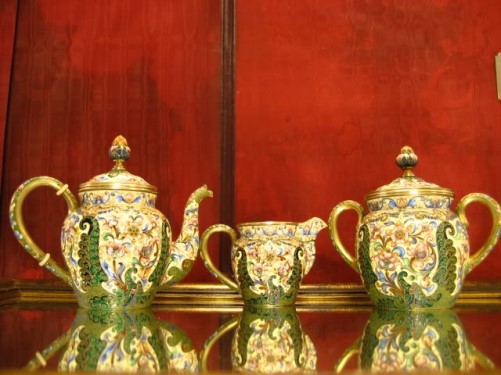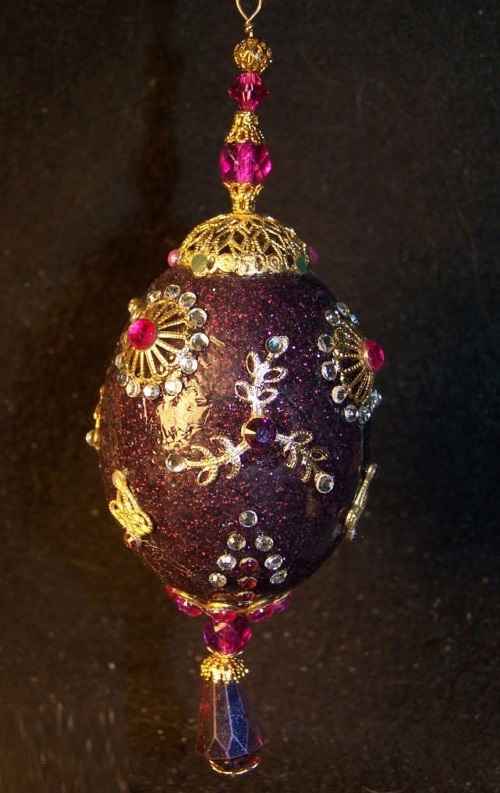Legendary Russian jeweler Peter Carl Faberge
Legendary Russian jeweler Peter Carl Faberge
For three decades, Carl Faberge remained on the crest of popularity. Among his regular customers were the Bulgarian king, heir to the Austro-Hungarian kings and queens of England, Italy, Spain, Greece, Denmark, Norway and Sweden, as well as the King of Siam by name Chulalonghorn. The Winter Palace had a special storage room, with ready gifts by Faberge – the royal family traveled a lot and along the way gave away tons of different items of branded company. For example, the Japanese emperor was donated luxury bowl, two candlesticks, a vase of agate, silver set (carafe with 12 Charco on the tray), and a hand mirror matte gold in the style of Louis XV. Chinese emperors – two tiaras, crystal thicket with a chased silver rooster, three silver vases with crystal tabs, two crystal decanter and a stud for a hat with a ruby and diamonds. Every day between 4 and 5 p.m. to the house number 24 on the Big Morskaya street gathered grand dukes – to see what’s new Faberge put up for sale.
Carl Faberge was able to quickly gain the court highest officials, providing free services to assess, repair and restoration of jewelry at the Hermitage. A free access to the exhibits of the museum allowed the jeweler carefully study the techniques of the old masters and stylistic features of products made in different epochs. It is noteworthy that in the Hermitage Carl worked for free. He was just forgotten to be included in the staff, for 15 years he did not remind about that.
Many relatives of the imperial family in the UK, Denmark, Greece and Bulgaria received Faberge products for free. In 1900 in Paris, Faberge got the title of “Master of the Paris Jewelers Guild”, and he was awarded the Order of the Legion of Honor.
By the turn of the century the company of Faberge had more than five hundred artisans. Faberge paid to his employees very well, but the working day lasted every day from 7.00 to 23.00 on Sundays – from 8.00 to 13.00.
The first success came to Faberge in 1882, at the exhibition “Russian art and industrial art” in Moscow. Faberge was first exhibited their products and received a gold medal for the copies of ancient Greek treasures from graves in Kerch, Crimea, as well as a number of other jewelry. Products of his company attracted attention of the Emperor Alexander III. In 1885, Alexander III commissioned the jeweler first Easter Egg (“Chicken”), as an Easter surprise for his wife Maria. The Empress was so enamored with gift that Faberge was commissioned to produce an egg every year, product should be unique and contain a surprise, this was the only condition.
Incredible work of Carl Faberge. Faberge Museum in Baden-Baden, Germany added to its collection works of Russian jewelry house, having bought it in 2011 for 800,000 euros ($ 1 million). However, the choice of the newspaper in the work of Faberge is not accidental: it is an exact copy of “Vedomosti of St. Petersburg” on October 18, 1905 with the text of the Imperial Manifesto on improvement of public order, signed on October 17, by Nicholas. A unique still life of 1905 presents the “gentleman’s set”: eggs, faceted glass unfinished vodka, snacks and smoked cigarettes. Despite its apparent simplicity, still life is made of the most expensive materials jasper, white – white stone, yellow – amber, newspaper, fish-snack and flies – of silver, glass and its contents – from the crystal, and the butt – from crystal and quartz.
However, demand for expensive ornaments falls, and at the end of 1917 Carl Faberge’s house on Bolshaya Morskaya Street closed. Revolution forced to close Faberge business in 1918. Jeweler moved to Riga, and from there to Germany. There he falls ill, and in June 1920 the outstanding and penniless jeweler died. He was cremated by will. Buried in Grand Jas in Cannes.
Carl Faberge jewellery

TABLE medallions from Cabinet of His Imperial Majesty and the Portrait of Emperor Nicholas II. Platinum gold, jade, miniature on bone, diamonds, diamonds. Faberge Workshop G. Vigstrem, miniaturist Zuyev. Russia, St. Petersburg, 1908-1917

Brooch from the Cabinet of His Imperial Majesty. Gold, silver, diamonds, enamel on a guilloche background. Faberge. Russia, St. Peterbug, early XX century.

Brooch in the form of the imperial eagle. Gold, platinum, diamonds, rubies, diamonds. Faberge. Russia, Moscow, 1913. In the original case.

Lily of the valley brooch. Gold, silver, diamonds, sapphire. Faberge firm, Studio of Holmstrem. Russia, St. Petersburg, 1899-1903

Sculptural vase of Faberge flowers with diamonds, crystal, pearl, jade, quartz, pink tourmaline, onyx

Suspension. Gold, diamonds, turquoise, garnets. Faberge, master M. Perkhin Russia, St. Petersburg, before 1898. Length of 1.6 cm Russian National Museum

Pendant with the monogram of Grand Duchess Maria Maksimilyanovna. Gold, rubies, diamonds cut “rose”. Faberge. Russia, St. Petersburg, the end of XIX century. Russian National Museum

Beetle brooch. Gold, rubies, sapphires, diamonds, moonstone, pearl. Length of 8 cm. Faberge firm, Studio of Holstrem. Russia, St. Petersburg, before 1898

Moon Brooch. Gold, silver, diamonds, satin rhinestone. Faberge firm, Russia, St. Petersburg, 1908-1917

Swan Brooch. Gold, silver, diamonds, sapphire. Faberge firm, Studio of Holmstrem. Russia, St. Petersburg, 1899-1903
Legendary Russian jeweler Peter Carl Faberge

Perevyshko A.I. “Karl Faberge presents egg to Emperor Nicholas II, in the presence of Alexandra and Tsarevich Alexei”
source liveinternet.ru/users/3920752/post225314373




































